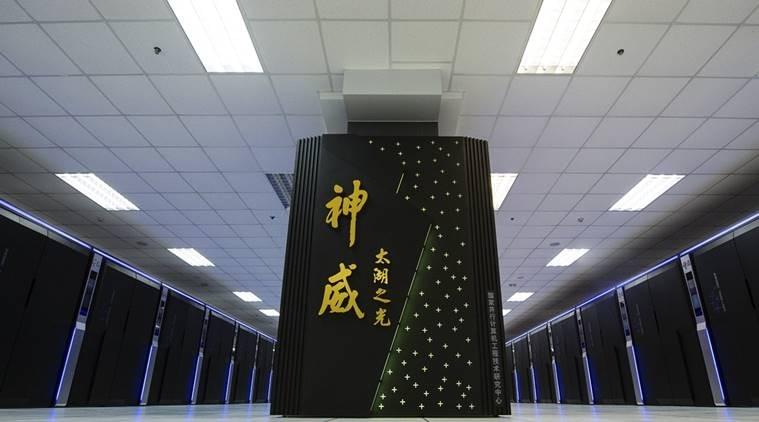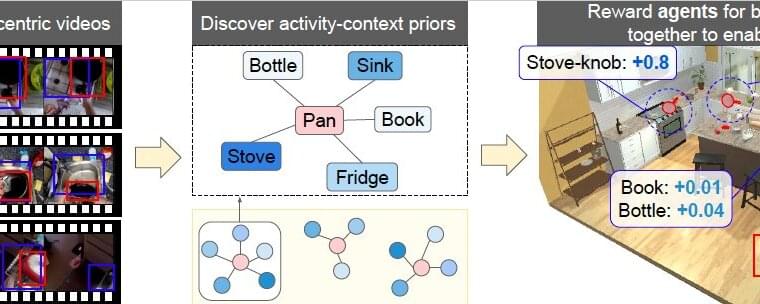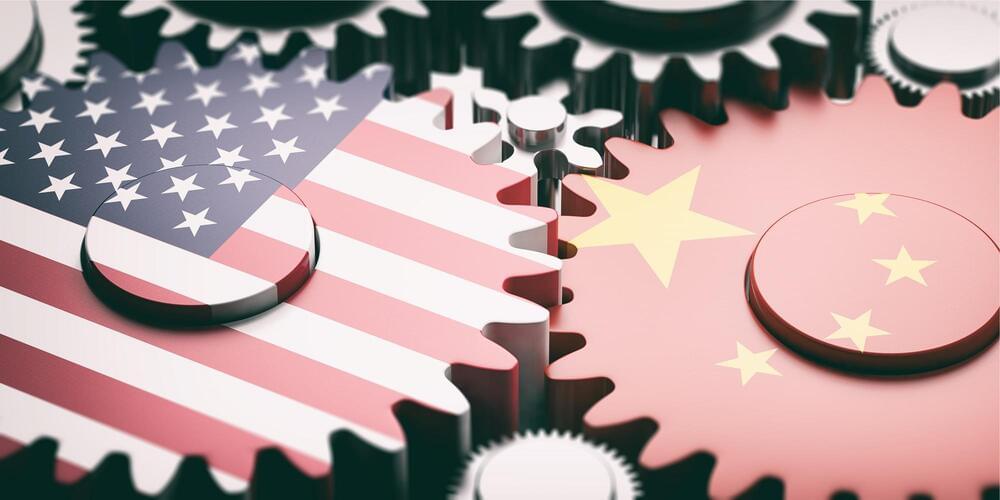It looks like China is building Skynet, with plans for a prototype exascale computer to be built this year.



This could hopefully be used to train robot hands how to handle everyday objects, a billion times over.
Over the past decade or so, many roboticists and computer scientists have been trying to develop robots that can complete tasks in spaces populated by humans; for instance, helping users to cook, clean and tidy up. To tackle household chores and other manual tasks, robots should be able to solve complex planning tasks that involve navigating environments and interacting with objects following specific sequences.
While some techniques for solving these complex planning tasks have achieved promising results, most of them are not fully equipped to tackle them. As a result, robots cannot yet complete these tasks as well as human agents.
Researchers at UT Austin and Facebook AI Research have recently developed a new framework that could shape the behavior of embodied agents more effectively, using ego-centric videos of humans completing everyday tasks. Their paper, pre-published on arXiv and set to be presented at the Neural Information Processing Systems (NeurIPS) Conference in December, introduces a more efficient approach for training robots to complete household chores and other interaction-heavy tasks.
Visit our sponsor, Brilliant: https://brilliant.org/IsaacArthur/
Artificial Intelligence offers many challenges, including criminals using AI to break the law, but also of AI, robots, and androids becoming criminals themselves.
Visit our Website: http://www.isaacarthur.net.
Support us on Patreon: https://www.patreon.com/IsaacArthur.
Facebook Group: https://www.facebook.com/groups/1583992725237264/
Reddit: https://www.reddit.com/r/IsaacArthur/
Twitter: https://twitter.com/Isaac_A_Arthur on Twitter and RT our future content.
SFIA Discord Server: https://discord.gg/53GAShE
Listen or Download the audio of this episode from Soundcloud: Episode’s Audio-only version: https://soundcloud.com/isaac-arthur-148927746/criminal-ai.
Episode’s Narration-only version: https://soundcloud.com/isaac-arthur-148927746/criminal-ai-narration-only.
Credits:
Criminal AI
Science & Futurism with Isaac Arthur.
Episode 314 October 28 2021
Written by:
Isaac Arthur.
Jerry Guern.
Produced & narrated by isaac arthur.

His views on the talent management system are roughly similar: there will be some new costs intended to be covered by savings elsewhere, though he admits he’s not sure yet whether the service will see a net savings or if the additional costs may mean it fields a smaller force.
“We haven’t figured it all out yet,” Berger said. “Our premise is we can’t afford not to do this. Whether it comes out plus in the black or the red, we don’t know yet.”
The Marine Corps would spend more money on higher salaries for higher-ranked Marines. It would spend more money on bonuses and benefits to entice qualified Marines to stick around. It would have to pay for digitized personnel systems and the AI tools and decision aids. However, it would spend less on personnel who process new recruit applications, if it were bringing in fewer Marines and screening fewer candidates.
A video on possible examples of how a government can try to manipulate is populace. It may be good to be more aware of its dangers.
Chinese citizens are being told to treat the USA and the Outside world as the Enemy, they’re being prepared for war whilst we tiptoe around worrying about hurting the feelings of the Chinese government… Time to wake up.
For a deeper dive into China’s Propaganda influence and soft power, watch our liveshow ADVPodcasts: https://www.youtube.com/advpodcasts.
Support Sasha and I on Patreon: http://www.patreon.com/serpentza.
Bitcoin — bc1qxfjp2t6x5dpslv59u0jl89m6k643hcn8h2jsvp.
Ethereum — 0x6Da150a2A8529110017Ed4db68B3dF0084900280
Paypal: https://paypal.me/serpentza.
DOCUMENTARY LINKS:
Get updated on the efforts of the organization; “Ocean Cleanup” in cleaning up the oceans. The video also details the technology and systems they are using.
The nonprofit global cleaning crew called The Ocean Cleanup, led by founder and CEO Boyan Slat, announced recently that it had reached viability of its ocean plastic-collecting System 2 technology and plans to begin cleaning plastic pollution in the Great Pacific Garbage Patch immediately while beginning development of System 003.
The Ocean Cleanup https://theoceancleanup.com.
THE OCEAN CLEANUP PROVES VIABILITY OF TECHNOLOGY WITH SYSTEM 002; REMOVAL OF PLASTIC FROM GREAT PACIFIC GARBAGE PATCH TO BEGIN IMMEDIATELY https://bit.ly/3BEbNtJ
Check out the Team Seas collab with The Ocean Cleanup and get involved https://teamseas.org.

Summary: Researchers shed light on how sensory information and cognitive processing interact in the brain to produce our perception of the world around us.
Source: SfN
New findings from studies in both people and animals are revealing clues about how sensory information and cognitive processes interact in the brain to produce our perception of the world.
✅ Instagram: https://www.instagram.com/pro_robots.
You are on PRO Robots Channel and in this digest roundup you will see: immortality technology, artificial muscles for robots, a robot chef printing food on a 3D printer, a home robot from Amazon and what it did not please the experts, Honda’s plans to create robots, rockets and flying cars, the unusual drone Prometheus, NASA’s mission to Jupiter, Samsung neuromorphic chip, unusual robots. Exhibition of the latest robotic weapons in the U.S., Boston Dynamics is preparing to release new robots every 3–5 years, unusual experiments with four-legged robots and more. Watch the video to the end and write in the comments, which news interested you more than others?
0:00 Immortality technology from Jeff Bezos | Technology News.
9:50 New home robot from Amazon | Robot spider from Apex Legends | Technology News.
18:50 Samsung neuromorphic chip copies memory | Drone superpowers | Technology news.
28:32 The latest military robots at U.S. 2021.
#prorobots #robots #robot #future technologies #robotics.
More interesting and useful content:
✅ Elon Musk Innovation https://www.youtube.com/playlist?list=PLcyYMmVvkTuQ-8LO6CwGWbSCpWI2jJqCQ
✅Future Technologies Reviews https://www.youtube.com/playlist?list=PLcyYMmVvkTuTgL98RdT8-z-9a2CGeoBQF
✅ Technology news.
#prorobots #technology #roboticsnews.

I wonder what the Sputnik moment would need to be in the AI race to trigger panic AI research spending in the US. It would probably have to be China hitting AGI first.
Native CPU and accelerator architectures that have been in play on China’s previous large systems have been stepped up to make China first to exascale on two fronts.
The National Supercomputing Center in Wuxi is set to unveil some striking news based on quantum simulation results on a forthcoming homegrown Sunway supercomputer.
The news is notable not just for the calculations, but the possible architecture and sheer scale of the new machine. And of course, all of this is notable because the United States and China are in a global semiconductor arms race and that changes the nature of how we traditionally compare global supercomputing might. We have been contemplating China’s long road to datacenter compute independence, of which HPC is but one workload, and these are some big steps.
SpaceX delays its Halloween launch, Tesla defends itself, Elon Musk solves world hunger.
SpaceX delays its first Crew Dragon flight since Inspiration4, Tesla goes on offense against Biden, UAW, Elon Musk offers a conditional $6 billion to the UN.